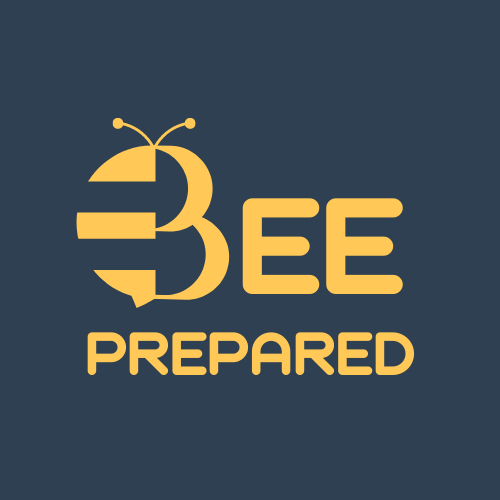以下包括常用公式列表:
- Future value (FV) = PV (1 + i) n
- Present value (PV) = FV/ (1 + i) n
- Target price = target cost + target fee
- Point of Total Assumption (PTA) = [(Ceiling price – target price) / buyer’s share ratio] + target cost]
- Communication channel = n (n -1) / 2
- Earned value (EV) = % complete x budget at completion (BAC)
- Cost variance (CV) = Earned value (EV) – actual cost (AC)
- Schedule variance = Earned value (EV) – planned value (PV)
- Cost performance index (CPI) = EV / AC
- Schedule performance index (SPI) = Earned value (EV) / Planned value (PV)
- Estimate at Completion (EAC) = BAC / CPI
- EAC = AC + Bottom-up ETC
- EAC = AC + (BAC – EV)
- EAC = AC + [(BAC – EV) / (CPI x SPI)]
- Variance at completion (VAC) = BAC – EAC
- Estimate to complete = EAC – AC
- To complete performance index (TCPI) = (BAC – EV) / (EAC – AC)
- Standard deviation (SD) = Pessimistic – Optimistic / 6
- Pert Formula Beta = (P + 4M + O) / 6
- Expected monetary value (EMV) = Probability * Impact
立即下載免費的 PMP 考試最後一分鐘
Terms
Release 1 > Release plan > Iteration 1 > Iteration plan > Feature 1 based on user story > Task 1 and its duration.
On-demand scheduling is used in a Kanban system and is based on the theory of constraints and pull-based scheduling concepts from lean manufacturing to limit a team’s work in progress to balance the demand against the team’s delivery output.
The schedule management plan creates the criteria and the activities for developing, monitoring and controlling the schedule.
Mandatory dependencies are legally or contractually required or inherent in the nature of the work (also known as hard logic or hard dependencies).
Discretionary dependencies are sometimes referred to as preferred logic, preferential logic or soft logic. Discretionary dependencies are founded based on knowledge of best practices within a particular application area.
The cost management plan describes how the project costs will be planned, structured and controlled. It includes variances and thresholds estimates.
Bottom-up estimating is a method of estimating a component of work. The cost of individual work packages/activities is estimated to exact details.
Cost estimates involve quantitative assessments of the costs required to complete project work, contingency reserves to account for identified risks, and management reserves to cover unplanned work and unidentified risks.
Basis of the estimate is the amount and type of additional details supporting the cost estimate which vary by application area, including direct and indirect costs and the confidence level in these estimates.
Cost baseline is the accepted version of the cost that does not include management reserves.
Project funding requirements involve total funding and periodic funding requirements (e.g., quarterly, annually) and are derived from the cost baseline. This is only an estimate.
Value analysis or value engineering involves finding the lowest cost method to complete the work without affecting the scope.
The cost forecast is either a calculated EAC or a new EAC.
Historical information review is performing parametric analysis by comparing the current project with previous ones using current project numbers.
Funding limits reconciliation is keeping the project expenses within the project determined budget.
Representation of uncertainty is used as an input for Monte Carlo analysis when certain risks or other sources of uncertainty are unclear or unknown when the PM wants to run the simulation.
A quality management plan describes how policies, procedures and guidelines will be implemented to achieve the quality objectives. It explains the activities and resources necessary for the project management team to achieve the quality objectives set for the project.
A quality metric describes a project or product attribute and how the control quality process will verify compliance to it. Examples of quality metrics: percentage of tasks completed on time, cost performance measured by CPI, failure rate, number of defects identified per day, total downtime per month, errors found per line of code, customer satisfaction scores and percentage of requirements covered by the test plan as a measure of test coverage.
Managing quality is quality assurance—the process of translating the quality management plan into executable quality activities that incorporate the organization’s quality policies into the project.
Quality reports can be graphical, numerical or qualitative. The information provided can be used by other processes and departments to take corrective actions to complete the project quality expectations.
Test and evaluation documents are used to evaluate the achievement of quality objectives. These may include checklists and detailed requirements traceability matrices.
Attribute sampling: The result either conforms or does not conform.
Variable sampling: The result is rated on a continuous scale that measures the degree of conformity.
Statistical sampling is choosing part of a population of interest for inspection.
Resource requirements (also known as resource requirements documentation) is used to identify the types and quantities of resources required for each work package or activity in a work package.
The requirements traceability matrix is a grid that links product requirements to the deliverables that fulfil them.
Text oriented format is a description of team member responsibilities in detail (details of the task, authority of the team member, qualifications, etc.).
The physical resource assignments describe the expected physical resource utilization along with details such as type, amount, location, and whether the resource is internal or outsourced.
A resource calendar identifies the working days, shifts, start and end of normal business hours, weekends and public holidays when each resource is available.
Project communications reports on all aspects of the project, such as performance reports, deliverable status, schedule progress, cost incurred, presentations and other information stakeholders require.
Project reporting is the act of collecting and distributing project information. Project information is distributed to many groups of stakeholders and should be adapted to provide information at an appropriate level, format and detail for each type of stakeholder.
Communication requirements analysis determines the information needs of the project stakeholders. These requirements are defined by combining the type and format of information needed.
Sample basic sender/receiver communication model involves ensuring that the message is delivered instead of understood.
Risk workshop is part of qualitative risk analysis. The project team may conduct a specialized meeting dedicated to the discussion of identified individual project risks. The goals of this meeting include reviewing previously identified risks, assessment of probability and impacts (and possibly other risk parameters), categorization and prioritization.
A risk owner is responsible for planning an appropriate risk response and for reporting progress on managing the risk, which will be allocated to each individual project risk as part of performing the qualitative risk analysis process.
An individual project risk is an uncertain event or condition that has a positive or negative effect on one or more project objectives.
Overall project risk is the effect of uncertainty on the project as a whole, arising from all sources of uncertainty.
Variability risks like weather, market changes and more can be addressed using Monte Carlo analysis.
Market research includes an examination of the industry and specific seller capabilities. Procurement teams may leverage information gained at conferences, online reviews and other sources to identify market capabilities.
PMP考試學習建議
提前做好準備。 大約 45% 的人在第一次嘗試 PMP 考試時未通過。 提前計劃很重要,這樣您就不必在一個月內完成所有事情。 將它分散幾個月可以防止你對學習感到壓力,同時也讓所有的知識在你的腦海中保持新鮮。 熟能生巧! 詳細了解我們的 3000 多題的 PMP 試題練習,以便在參加真正的考試之前做好準備。
免費PMP試題練習
立即登入並開始練習!
腦海中有大膽的想法嗎
分享內容並留言告訴我們吧

![You are currently viewing PMP (Project Management Professional) 考試前必須知道的 20 個公式和概念+PMP免費考題[2022]](https://beeprepared.info/wp-content/uploads/2022/03/Screenshot-2022-08-05-at-1.42.19-PM.png)



